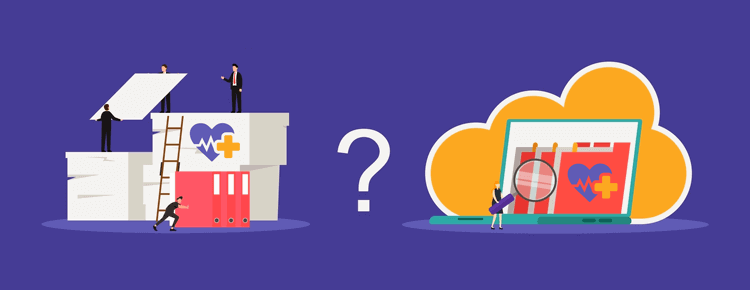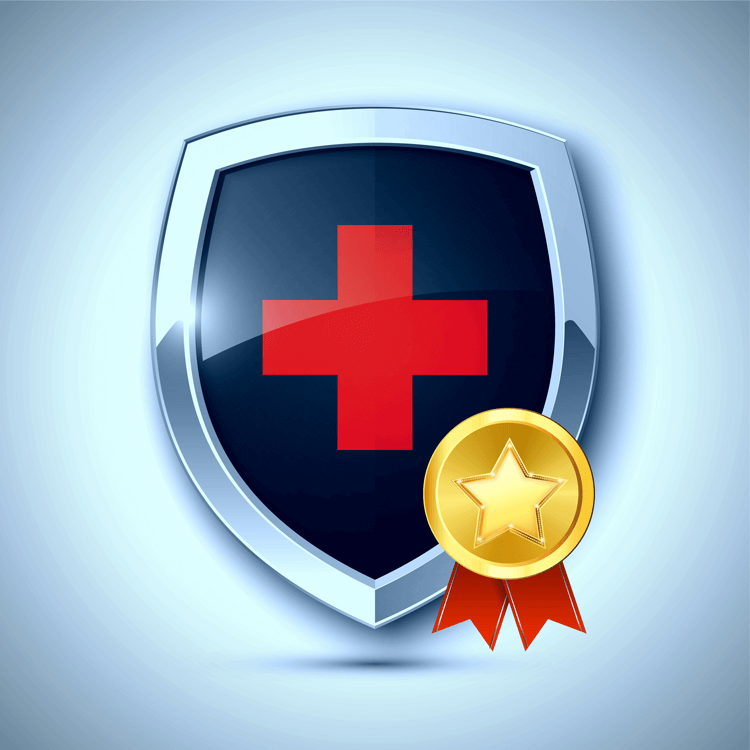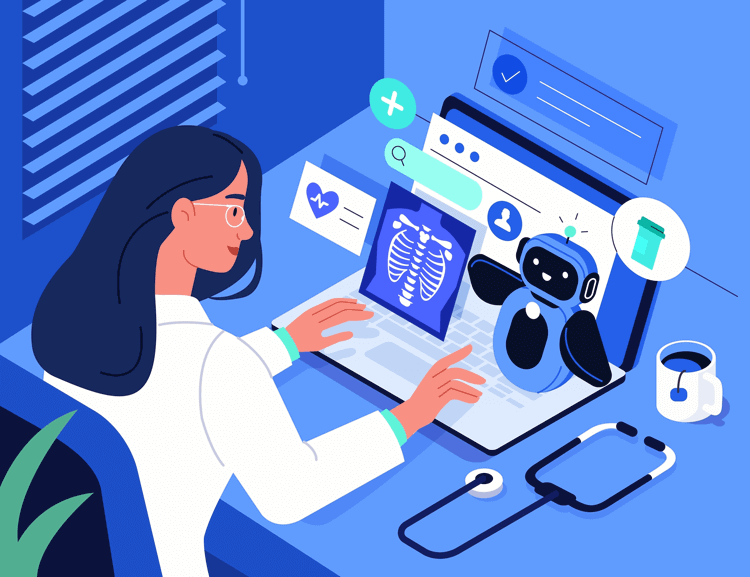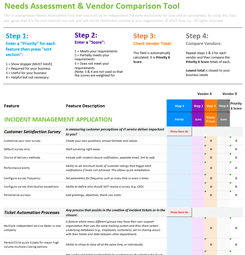Paper vs. Electronic Medical Records (EMR): Pros, Cons and How to Choose Software
A paper medical record is a piece of patient information, such as a chart, that is recorded on physical paper. On the other hand, an Electronic Medical Record (EMR) is a digital version of patient information. Paper medical records are still widely utilized in the United States and around the globe. However, EMRs have been gaining popularity since their inception in the 1960s.

EMRs are becoming popular based on their ability to more easily facilitate the collection, storage, and analysis of patient medical records. Still, skeptics of EMRs argue there are issues with integration, confidentiality, and compliance that healthcare providers should be wary of. Both paper medical records and EMRs have their advantages and disadvantages.
In our article, we'll briefly discuss how the healthcare industry has evolved into using EMRs in the first place. Then we'll review the pros and cons of each medical record type. After that, we'll offer some helpful criteria for choosing software and deciding if EMRs may benefit your medical practice.
Brief History of the Adoption of EMRs
-
Early 1900s
Medical professionals began annotating paper medical records starting in the early 1900s. Traditionally, medical records were written on paper and kept in file cabinets, where only one copy of the record was available.
-
1960s and early 70s
Eventually, in the 1960s and early 1970s, new computer technology laid the foundation for the electronic medical record. Initially, EMRs were developed on mainframe computers and were only utilized at major academic medical facilities. But these had limited storage, required nightly database backups, and wired terminals. EMR implementation carried a high financial cost and was stymied by limited acceptance by physicians, lack of incentives, and data entry errors.
-
1980s and 90s
In the 1980s and 90s, hardware became more affordable and portable. EMR software was more powerful and easier to use. In addition, the development of the internet played a massive role in faster and easier web-based EMRs.
-
2000s
EMRs continued to improve throughout the 2000s. Standards were developed so that third-party applications could interface with EMRs. Data ownership and privacy laws were created to address ethical matters. Soon, a massive amount of healthcare data was digitized, and large healthcare organizations and government agencies recognized the value of EMRs.
EMR development and innovation continue to this day. EMR technology is more widespread, like in primary care and nursing homes, and has been integrated with patients' personal health records (PHRs) and family history. Nonetheless, the complete adoption of EMRs is still incomplete. For example, in certain rural areas, EMRs are unavailable due to financial barriers. Likewise, in some parts of the healthcare industry, there is still debate about the pros and cons of EMRs versus traditional paper records.
Pros and Cons of Paper Medical Records
The major argument for paper medical records can be summarized by the phrase, "If it ain't broke, don't fix it." In other words, some healthcare professionals prefer paper medical records because of their familiarity and reliability.
Part of the reliability of traditional paper-based medical records is also that they are inexpensive. If you boil a paper-based system down to its most basic components, you only need a computer, printer, and a robust, well-organized, and lockable cabinetry system. And, of course, reliable access to word processing software, paper, and printer ink.
On the other hand, due to their simple design, paper medical records require a lot of physical space. As a result, navigating the array of physical documents within a more extensive storage system can be time-consuming. The time-consuming nature of paper-based medical records is a major consideration for emergency-based medical facilities where speed is critical.
Paper medical records have limited security and offer no backup. Storage cabinets can be breached relatively easily by unauthorized individuals. Similarly, documentation can also be easily destroyed during a natural disaster, like a flood or fire.
|
Pros and Cons of Paper Medical Records |
|
Pros |
Cons |
Lower upfront financial costs |
Requires a lot of physical storage space |
Easy and familiar to use |
Time-consuming to find data |
Simple to make changes by editing documents in a word processor |
Limited security and no backup |
No integration with other management tools |
|
No remote access |
|
Pros and Cons of Electronic Medical Records
A lot of modern health institutions have transitioned from the traditional medical record system to EMRs. While this transition may cost a lot of money upfront, EMRs usually lower operational costs in the long run.
One reason is that EMRs can easily help mitigate errors. For example, there's no need to worry about illegible handwriting, and data can be entered automatically. Fewer errors mean spending less time and money on fixing those errors. Entered data can also be tracked more easily, allowing for more nuanced decision-making and better quality of care.
Another critical component of EMRs is their ability to enhance patient participation. Nowadays, patients can access online personal health records via patient portals. For example, after a blood draw, a patient can view their lab results. Patients can also send and receive messages through the portal and schedule appointments. Likewise, doctors have remote access to medical records.
Another advantage to EMRs compared to paper records is that they take up dramatically less space. In addition, EMRs are much less susceptible to damage or tampering from unauthorized individuals. (Although they are not 100% protected).
On the other hand, EMRs are very costly to implement. For example, they require brand-new hardware and software. In addition, current personnel must be trained to use the new tools, and new tech support must be hired.
After the transition, EMRs are susceptible to malfunction. This can lead to costly "downtimes" and possibly hiring third-party tech support to intervene. Similarly, as mentioned above, EMRs are not 100% protected. Data breaches can happen. However, routine IT audits can help identify and shore up weak points in the EMR system.
|
Pros and Cons of Electronic Medical Records |
|
Pros |
Cons |
Requires very little physical space |
Expensive financial investment upfront |
Reduces medical errors and duplications |
Possibility of malfunction, requiring IT support |
Compliant and backed up |
Susceptible to data breaches from cyber attacks |
Improves overall medical care |
|
Enhances patient autonomy |
|
How to Choose EMR Software for Your Organization
Nowadays, there are many different EMR software programs that facilitate cutting-edge services for healthcare institutions. So many, in fact, that it can be difficult to decide which one would be best for your organization.
To alleviate some of the indecision, we think it's important to pay attention to the following criteria when looking at EMR software.
-
Physician-Hosted vs. Remotely Hosted
There are two types of EMRs – physician-hosted and remotely-hosted. With a physician-hosted system, the data is stored on the local institutions' own servers. Likewise, the local physician is responsible for maintenance, security, and data backup. The challenge here is that it effectively requires the development of an in-house IT team to handle the EMRs. Or a third-party IT vendor.
With remotely-hosted systems, data is stored on another third-party's servers. For example, on an internet or cloud-based server. In addition, the third party is responsible for maintenance, security, and data backup. Remote-hosted EMRs are exposed to the unique challenge of obsolete technology. Similarly, termination is a risk should the third party go insolvent or end the contract, potentially exposing the medical records.
-
Data Reporting Tools
EMRs can do more than just hold onto medical records. They are comprehensive systems with additional management tools. They can use powerful software to interpret the data and generate reports. (Sometimes using AI). For example, patient history, lab results, and prescriptions can be tracked, and automated alerts can be sent to physicians and patients.
-
Customizable Dashboards
Extra data is great, but it needs to be decipherable. Customizable and highly graphic dashboards are great for visualizing and deciphering complex data. With a customizable dashboard generating charts and graphs, you can perform the critical data analysis required to make appropriate medical decisions. This is true for decisions on a patient-to-patient basis and a larger institutional scale.
-
E-Prescription and Medication Tracking
EMR systems can allow physicians to write electronic prescriptions. E-prescriptions can be written remotely and sent directly to corresponding pharmacies. Similarly, EMRs facilitate medication tracking for patients. They can highlight potential medication interactions and record allergic reactions or other harmful effects.
-
Document Management
Electronic Document Management Systsms (EDMS) are the mainstays of EMRs. They allow healthcare personnel to easily create, edit, and store digital copies of patients' medical records and charts. With high-quality EMRs, document management is intuitive, easy to use, and rapid.
For more, see our blog post on the top 5 HIPAA-compliant document management software solutions.
-
Secure and Compliant
An EMR system must have safeguards to ensure the confidentiality and security of the medical records. For example, federal Health Insurance Portability and Accountability Act (HIPAA) requirements, and federal Health Information Technology for Economic and Clinical Health Act (HITECH) requirements.
Let Giva Support Your Technology Transitions
At Giva, we're invested in supporting healthcare institutions to offer the best possible medical care. We know the ability to do so can be impacted by growing pains related to an EMR transition and inefficient IT service software. That's why we created powerful and highly-efficient IT Service Management (ITSM) Software.
Our HIPAA-Compliant ITSM products are powered by your highly-skilled personnel but supported by AI Copilots. Between the two, your IT teams can substantially improve patient satisfaction, lower report preparation time by up to 80%, and avoid getting blindsided by unforeseen obstacles.
Conclusion: EMRs Are Good, But Not Perfect
Research is showing the uptake of EMRs is on the rise and it is here to stay. EMRs improve the accuracy of information, support decision-making, and improve accessibility and continuity of medical care. However, EMRs will never be perfect. In some cases, EMRs may even lead to burnout.
For that reason, when it comes to deciding if EMRs make sense for your medical practice, experts recommend moving forward with caution. They warn to be wary of transitioning to EMRs as a possible silver-bullet solution for all organizations.
Instead, the recommendation is to prioritize the real problems your healthcare institution is experiencing and then find a feasible and modern EMR solution that best fits your situation when the time is right. From there, the quality of the implementation and the extent to which support is integrated into the already existing healthcare system will ultimately determine how beneficial EMRs will be in the long run.
Giva Support Software is HIPAA Compliant
Provide your customers with the safety and security of HIPAA/HITECH compliance. HIPAA compliance is included in all editions at no additional cost, and is covered by a Cyber Liability Insurance Policy.
Ready to see how Giva can help you? Get a demo to see Giva's solutions in action, or start your own free, 30-day trial today!





